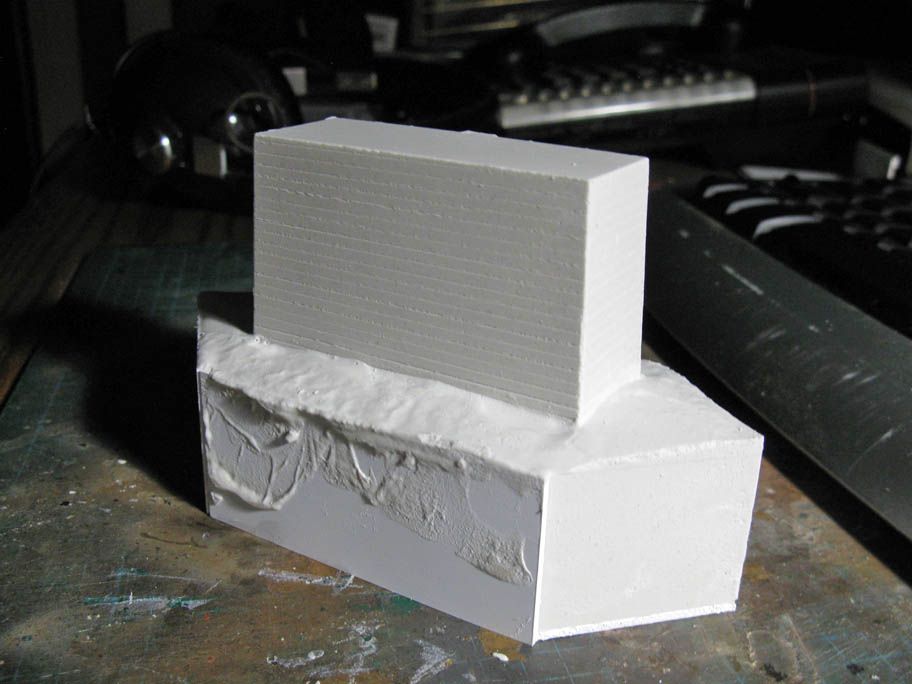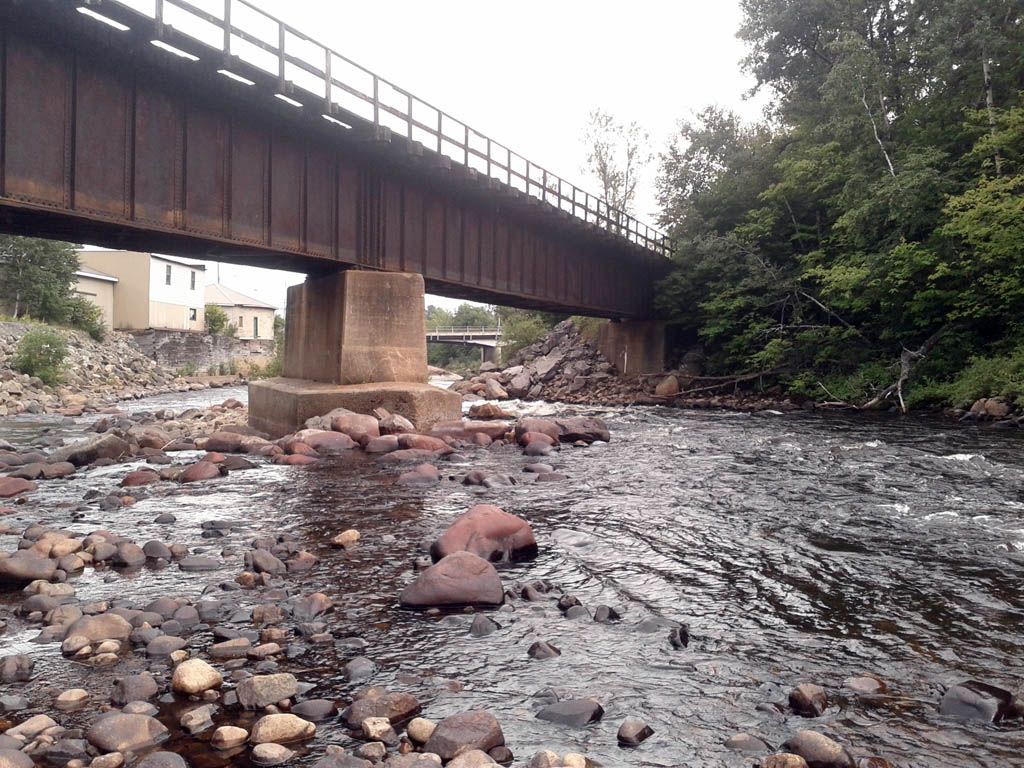As stated in a previous post, I wasn't satisfied at all with my bridge abutments on Malbaie River. They were built with styrene sheet painted with Humbrol oil paint and talcum powder to give it some texture. We quickly found out this texture wasn't very durable under normal use. I mean it easily scratches. Maybe it's because I didn't prime the styrene, but I doubt it would have been that good. Most matte paint job are always easy to scratch as a matter of fact. I'm a little bit worried it will be worse as we do scenery works over this area.
 |
| Original styrene bridge pile |
Thus, I decided to replace the central pile which is exposed to more risks than the bridge abutments. Figuring out how to cast such a complicated shape with a mold wasn't easy at first. But after giving it some thoughts, I came out with a simpler idea and follow real prototypes: cast the original rectangular pile then cast the concrete ice breaker during a second phase.
 |
| Casting the ice breaker |
I used the same method described in a previous post about
making plaster abutments. I think is works wonders with little effort and time invested. I didn't care about making the top surface of the ice breaker perfect because the prototype is irregular. I smoothed the surface the best I could, trying to get a little slope to help water rundown into the river.
 |
| Stippled concrete effect on fresh plaster |
While the plaster was still fresh, I used an old stiff brush to stipple the surface and get an old concrete effect. also, using a scrap of styrene, I bevelled the edge of the pile following the prototype. Then I stipple again the bevels to make them look older.
 |
| The real prototype as seen in July 2014 |
Now, I just need to let it dry for a few days before painting and weathering it. I'm seriously thinking about redoing the styrene abutments in plaster too. It means I'll have to rip off the old ones and repair the scenic shell once again. I feel it's now or never. If I wait after we lay track in Clermont, it will be too late. I'm also worry the texture and colors will vary greatly between the central pile and abutments.
Here you can see a comparison between the old pile and the new one. It speaks for itself.








No comments:
Post a Comment